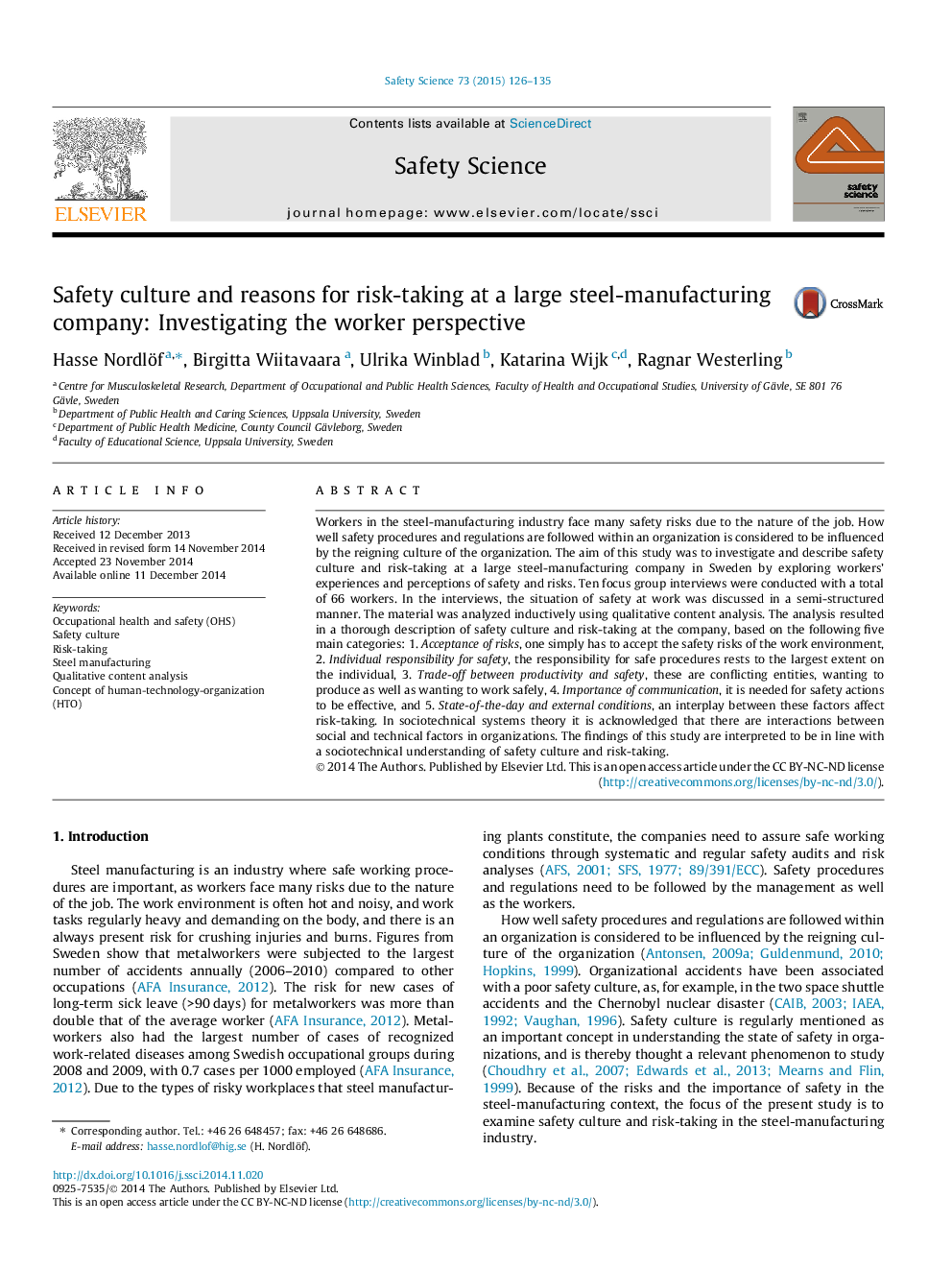| Article ID | Journal | Published Year | Pages | File Type |
|---|---|---|---|---|
| 6976050 | Safety Science | 2015 | 10 Pages |
Abstract
Workers in the steel-manufacturing industry face many safety risks due to the nature of the job. How well safety procedures and regulations are followed within an organization is considered to be influenced by the reigning culture of the organization. The aim of this study was to investigate and describe safety culture and risk-taking at a large steel-manufacturing company in Sweden by exploring workers' experiences and perceptions of safety and risks. Ten focus group interviews were conducted with a total of 66 workers. In the interviews, the situation of safety at work was discussed in a semi-structured manner. The material was analyzed inductively using qualitative content analysis. The analysis resulted in a thorough description of safety culture and risk-taking at the company, based on the following five main categories: 1. Acceptance of risks, one simply has to accept the safety risks of the work environment, 2. Individual responsibility for safety, the responsibility for safe procedures rests to the largest extent on the individual, 3. Trade-off between productivity and safety, these are conflicting entities, wanting to produce as well as wanting to work safely, 4. Importance of communication, it is needed for safety actions to be effective, and 5. State-of-the-day and external conditions, an interplay between these factors affect risk-taking. In sociotechnical systems theory it is acknowledged that there are interactions between social and technical factors in organizations. The findings of this study are interpreted to be in line with a sociotechnical understanding of safety culture and risk-taking.
Keywords
Related Topics
Physical Sciences and Engineering
Chemical Engineering
Chemical Health and Safety
Authors
Hasse Nordlöf, Birgitta Wiitavaara, Ulrika Winblad, Katarina Wijk, Ragnar Westerling,
